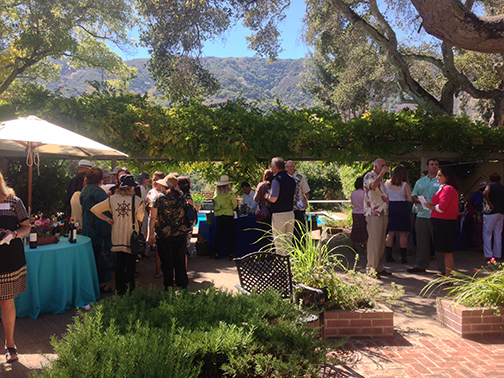
Brandon Wiggins, Science Writer at Large
Perhaps the California Oak moth is not such a pest after all. Carmel Valley, as well as many other central and northern California areas, has been inundated with squishy worms, defoliated trees, and a brownish-gold detritus covering every surface from the driveway to the kids’ bikes. Albeit messy, the oak worm has its positive aspects.
With two breeding cycles in most years, the Oak Moth (Phryganidia californica) can heavily infest our local Quercus agrifolia, the coast live oak, every five to ten years. Locals have noted that the last infestation this severe was in 1984, yet another year of apocalyptic trepidation. During May and June, the juvenile half to one-inch multi-colored caterpillar will skeletonize the perennial oak’s leaves, cover decks and patio furniture in wormy goo, and chrysalize into many vein-winged oak moths within a few weeks.
Here in Carmel Valley where we have a unique mix of Quercus species, we are prone to these infestations. The deciduous oaks, the Holly Oaks (Quercus ilex), for example, are not eaten by the insatiable larva, but do host the female Phryganidia’s nesting requirements. Although the moths do not ‘eat,’ a job completely undertaken by the larval caterpillar stage, they do lay eggs on the underside of the deciduous oak’s leaves, ready to restart the cycle. Therefore those who have coastal live oaks near perennial oaks will suffer defoliation the most.
A completely fascinating process on its own, chrysalization encompasses the complete morph of liquefied stem cells that re-invent themselves into entirely new beings. Whose idea was that?
Distressingly, the Oak Moth may temporarily feed on other species that are not oak related. These insects will be unable to mature on this material and most will perish before crysalizing into moths. Along that line, if the oak has been completely defoliated, the caterpillars will become malnourished and eventually die without maturing into an egg laying entity. That would explain the putrefying material under the BBQ cover that was left in the corner…
The good news is that the caterpillar droppings, also known as frass, have a tremendous benefit to our overall ecosystem. That thick grainy substance is full of nitrogen and mobilizes overall carbon distribution. It also increases soil respiration and has a direct and indirect effect on nutrient and nitrogen cycling. The best treatment of this material is composting, along with other spring and kitchen waste, for your high nitrogen (green as opposed to flowering) crops.
As for our precious oaks, the University of California – IPM website states, “Healthy oaks generally tolerate extensive loss of leaves without serious harm, so treatment to control oak worm is usually not recommended.” Spraying for Phryganidia could harm birds and beneficial insects and only add more chemicals to an already inundated ecosystem. The oaks will completely recover unless they were weak and ready for their timely demise in any event. As of mid-June 2011, we are seeing new growth on the beleaguered oaks sprout with wild abandon.
As in life in general, the messy bits, also known as “squishy goo,” can nourish the most barren but fundamentally strong beings, given the opportunity and enough time to cycle through the natural processes. The oaks will come back more beautiful than ever. Maybe a few weeks of unsightly mess are worth it!